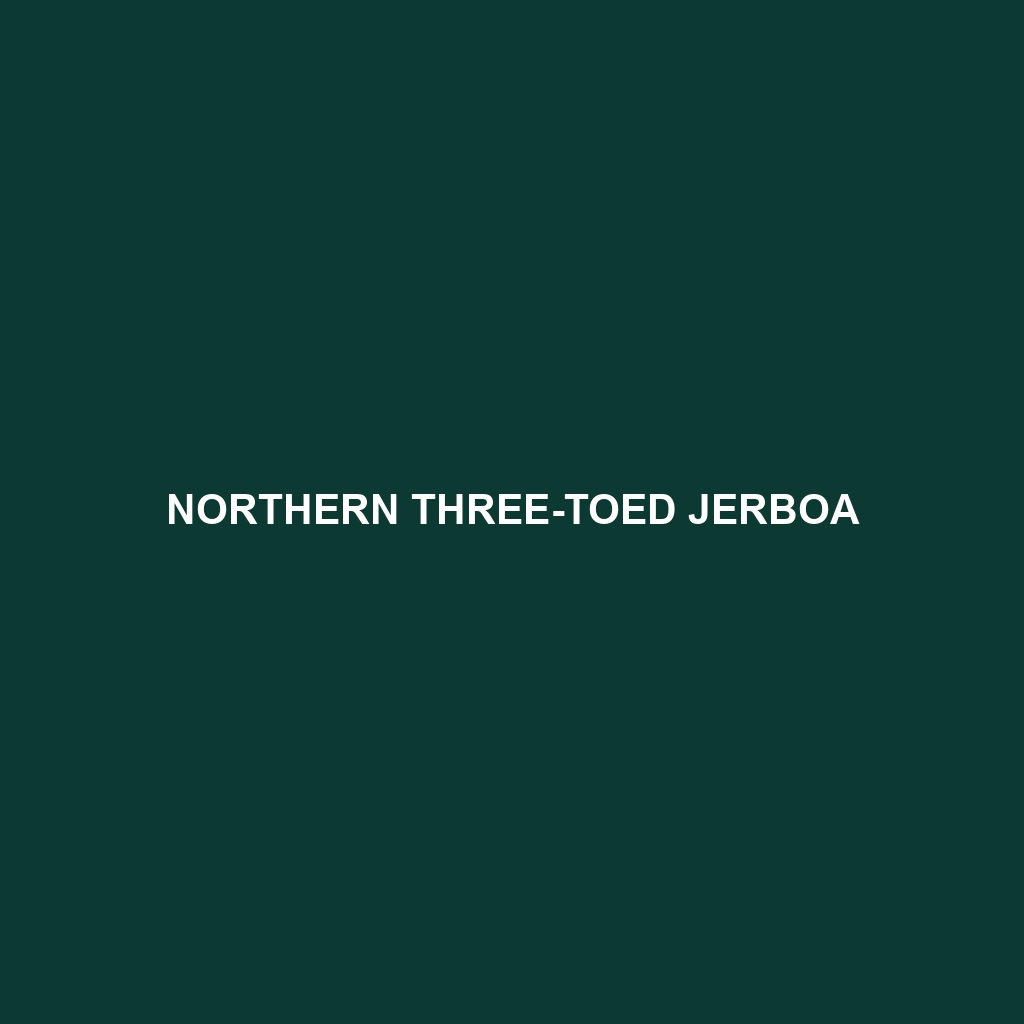Common Name: Northern Three-toed Jerboa
Scientific Name: Dipus sagitta
Habitat:
The Northern Three-toed Jerboa is primarily found in arid regions of Central Asia, particularly in countries such as Mongolia, Kazakhstan, and northern China. These agile mammals prefer sandy plains and semi-desert environments, where they can burrow into the ground to escape extreme temperatures and predators. The geography often features sparse vegetation, which provides cover while allowing for easy movement and foraging.
Physical Characteristics:
Adult Northern Three-toed Jerboas typically measure between 8 to 10 inches (20 to 25 cm) in length, including their long, tufted tails. They boast a light brown or sandy fur coloration that helps them blend into their desert surroundings. Their most distinctive feature is their large hind feet, which are adapted for powerful jumping, allowing them to reach distances up to 3 meters in a single leap. They also have smaller front limbs, which help them dig and manipulate their environment.
Behavior:
Known for their remarkable agility, Northern Three-toed Jerboas are primarily nocturnal, which helps them avoid the daytime heat of their desert habitat. During the night, they engage in foraging activities and are known to create extensive burrow systems that serve as shelter against predators and harsh environmental conditions. Their social behavior is somewhat solitary, although they may share burrows with others during breeding seasons.
Diet:
The diet of the Northern Three-toed Jerboa primarily consists of seeds, roots, and various plants found within their arid habitat. They are adept at foraging, often utilizing their keen sense of hearing to locate food sources. This herbivorous diet allows them to thrive in environments with limited resources, as they are able to extract moisture from the plant material they consume.
Reproduction:
The Northern Three-toed Jerboa typically breed once a year, with the breeding season occurring in the spring and summer months when environmental conditions are more favorable. After a gestation period of about 20 to 30 days, female jerboas give birth to litters ranging from two to five offspring. The young are born blind and hairless but grow quickly, becoming independent within a few weeks of birth.
Conservation Status:
The Northern Three-toed Jerboa is currently listed as vulnerable due to habitat loss and degradation caused by agricultural expansion and climate change. Conservation efforts are essential to protect their natural habitat and ensure the survival of this unique species.
Interesting Facts:
One fascinating fact about the Northern Three-toed Jerboa is its ability to leap great distances, making it one of the best jumpers among rodents. Additionally, they have developed adaptations that allow them to survive for long periods without direct access to water, deriving hydration from the plants they consume.
Role in Ecosystem:
The Northern Three-toed Jerboa plays a significant role in its ecosystem as a herbivore, helping to control plant populations and disperse seeds. Their burrowing behaviors also aerate the soil, which enhances the health of the desert ecosystem. By serving as prey for various predators, they contribute to the food chain and support the biodiversity of their habitats.
